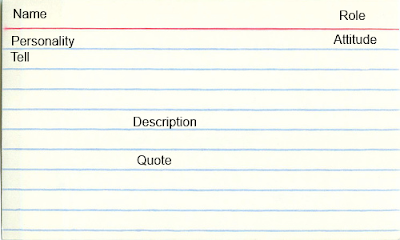Recently, however, I decided to delve into solitaire roleplaying, and here's how.
For the actual mechanics, I make use of Black Stream: Solo Heroes from Sine Nomine Publishing. This product lays out guidelines to handle a solitary player and works with, essentially, any rules set. For the rules, I make use of BLUEHOLME Prentice Rules from Dreamscape Design. Normally I'd go with Swords and Wizardry, but the simplicity, and short level span, of BLUEHOLME gives me a bit more flexibility when it comes to solo shenanigans.
When jumping in to solo play, I took a look at the various tools to handle the GM side of things. The 9Qs, the Mythic GM Emulator, various bits of homebrew and tomfoolery. While each had their strengths, none had exactly what I wanted. Instead, I knocked together my own set of guidelines.
First and foremost, I am a sandbox gamer. Never was good at carrying an extended plot, and with solo play, it's a bit hard to keep the left hand ignorant of hte right hand's foibles. A sandbox, therefore, seemed key. To accommodate this, I used WizarDawn's World Map generator until I found something that sparked my curiosity. I didn't worry too much at first about naming and planning everything, as that'll be filled in via the plots as they fall, and by my own curiosity. Thus armed with a world and a system to govern play, I strike out into the heady realm behind the screen... Plot.
(side note: I've mentioned before how much I love this site. Go check it out, tools, generators, delights of all kinds. A treasure trove for the fan of random tables.)
For plot, I make use of S. John Ross' "The Big List of RPG Plots". I copied each down onto a blank index card, and printed the actual contents of each plot entry or easy reference. To generate an adventure or twist, I just draw a card from the deck, flip it, and reference the entry. If a twist is needed, Ross was kind enough to provide suggestions, or for fun, I draw a second card. But who provides these hooks? The Cast of course!
Much like the plot cards, I created a deck of Cast cards using three generators, The Thieve's Guild Person and Name generators, and for the personality, I went with 101 Quick NPC personalities. The cards follow a simple format, as seen below.
Most of the template is self-explanatory. The Tell is a habit or trait that immediately stands out about the character, while the Attitude is the character's initial temperament when drawn, rolled on a D6. Certain personalities modify the chart, resulting in a higher chance of one reaction or another, while others leave the standard spread alone. One character, the captain of the guard in the starting city, is presented below.
An interesting side effect of the generator I chose, green eyes pop up fairly often. Now, while I could just roll with that, I decided to work green eyes in as a dressing element of the sandbox. To what end? No clue yet, still pondering.
Back on course, for encounters I'll be recording monster entries onto cards, assembling decks of "Wandering monster" encounters for hex types. This is no different than a regular table, just in index card form. Loot etc will be randomly generated as well.
All in all, this is the form of solitaire role playing that works for me. I suspect the results will read much like a cross between the Garret case files, and Fafhrd and the Gray Mouser. Truth be told, I'm okay with that. Once I'm done with the monster cards, I'll be giving this system a try. So expect, on occasion, for single-play reports to pop up.


No comments:
Post a Comment